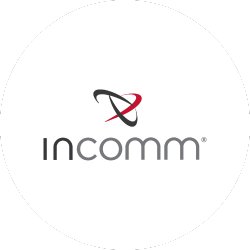Success Story
Embedded CXM Consulting Improves The Odds For Gamesys

Tap CXM has been part of the Bally’s Interactive team since 2018, providing industry-leading CXM consulting. Together, we’re bringing innovative marketing automation ideas to life.
Industry
iGaming
Date delivered
Ongoing
Length of project
Since 2018
Solution provided
Understanding customers as individuals, Delivering personalised CX at scale, Connecting Customer Journeys Across Channels
The Project
Tap CXM has been part of the Bally’s Corporation marketing automation team since 2018 (originally working with Gamesys Group before Bally’s acquired Gamesys in 2021). Our embedded expertise—CXM consulting, marketing automation best practices and technical skills—enables Bally’s to stay competitive and compliant.
The Challenge
- Legal & operational comms
- Cross/up sell
- + technical support
- Email, SMS, push notifications – all need to align
Bally’s Interactive operates some of the world’s most popular iGaming brands. It’s a highly regulated and ultra-competitive industry. As such, the company’s CXM challenges fall into 1 of 2 camps:
- Legal and operational: Ensuring customer communications are reliable, relevant and respectful, and compliant across all channels.
- Promotional: Launching new ventures, growing the user base and nurturing loyalty through mutually valuable experiences.
Of course, things aren’t so clear-cut in the customer experience world. Legal and operational comms sometimes overlap with cross- and up-sell opportunities, and users’ communication preferences matter. Underpinning this is Bally’s need for efficient and effective marketing operations. Everything needs to align to deliver optimal returns on tech investments.
The Solution
We’re ingrained in the Bally’s team at least 2 days each week, providing best-practice CXM consulting and hands-on support for UK and US marketing automation teams.
Consulting: We Make it Happen
Our CXM consulting enables Bally’s to prioritise, scope, design and implement new ideas. You’ll see some examples below. We’ve also played a significant role in launching new iGaming ventures in the UK, US and Europe. Most projects come to life in Adobe Campaign, or in the organisational processes leading to and from the platform. But they’re integrated with broader CXM operations, including an increasing investment in Braze. We make sure every idea that goes live drives value, contributes to business goals, and optimises the customer experience.
Read more: What Do CXM Consultants Do, Exactly?
Ongoing Technical Support: We Keep it Running
A smaller part of our role involves troubleshooting technical issues and solving critical Adobe Campaign questions:
-
- A ticketed system (via Freshdesk) allows us to react quickly to bugs, issues and requests.
- Tailored training sessions have proactively developed the team’s self-sufficiency.
- Automating workflows eliminates errors and reduces the resources required to run campaigns.
- Optimising Adobe Campaign processes has enabled data to become more usable in other areas.

Our success is testament to Tap’s brilliant and capable team, who we’ve worked with for many years. Through their support and training, we now manage the day to day in-house but lean on Tap for bigger thinking and complex technical support. We have a great relationship and they truly are an extension of our own team. Whoever we speak to, we know they can—and will—get it done.
Melissa Giannini, Head of Product MarTech, Ballys Interactive
The Results
On the consulting side, our embedded expertise was instrumental in transitioning Gamesys into the Bally’s ecosystem and transforming it into a customer-centric organisation.
-
- Overhauled workflows to help Bally’s launch 12 new ventures; 6 in the UK, 4 in the US and 2 in Spain.
- Reduced the load of data load processes for new ventures, from ~2 weeks to ~2 hours.
- Introduced quality check (QC) sheets to optimise engagement and consistency in campaigns.
- Supported the US team to begin migrating campaign operations to Braze.
We’ve also implemented 10+ Adobe Campaign projects, including:
-
- A customer-facing web app for personalised marketing offers and simplified multichannel marketing.
- No-login campaign development functionality via a highly customised internal web app.
- Enhanced Message Centre configuration for A/B testing on transactional messages and campaigns.
- Custom reporting features that enable deep-dives into a broader dataset than OOTB tools allow.
- Rolling out one-click unsubscribe to improve compliance, customer satisfaction, and email deliverability.
- A bespoke audit module that automatically sends alerts to customisable error reporting dashboards.















